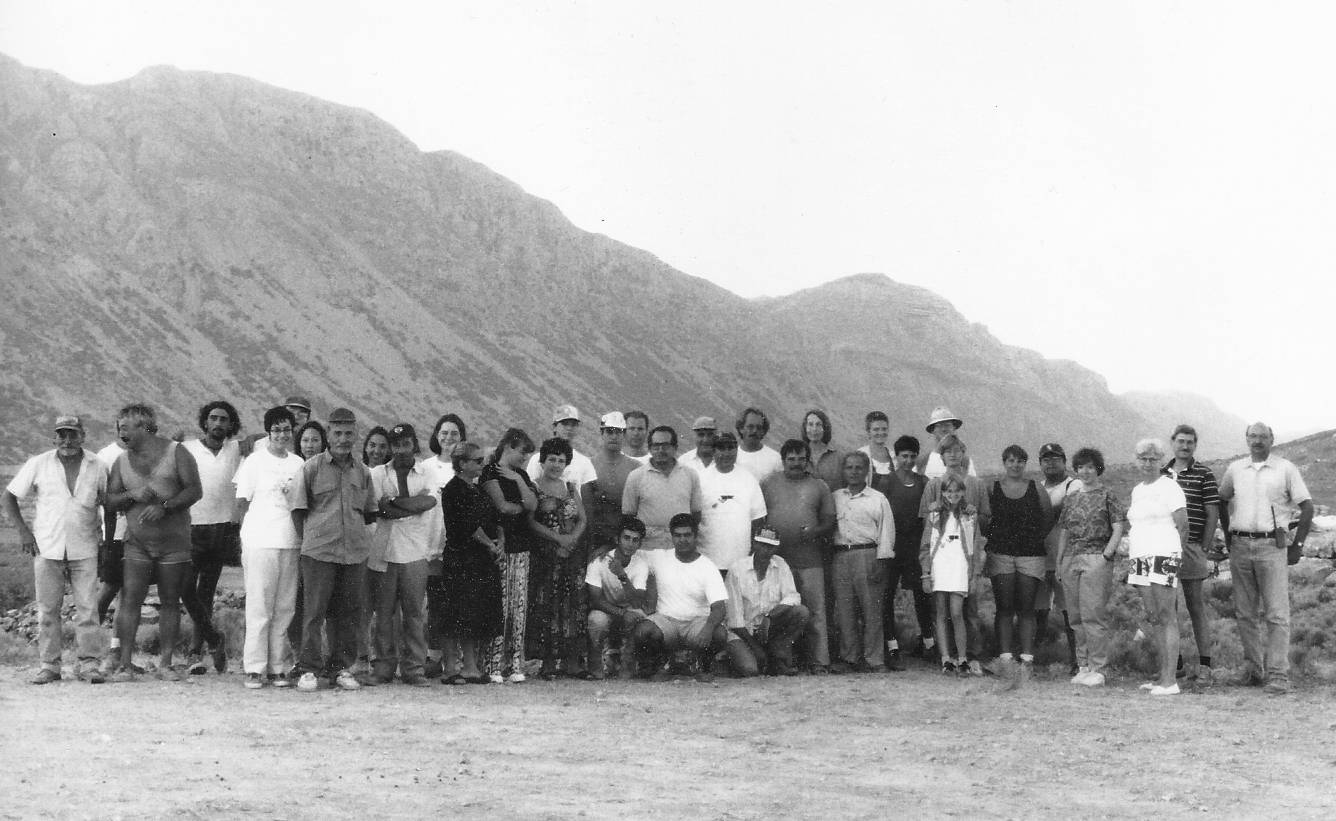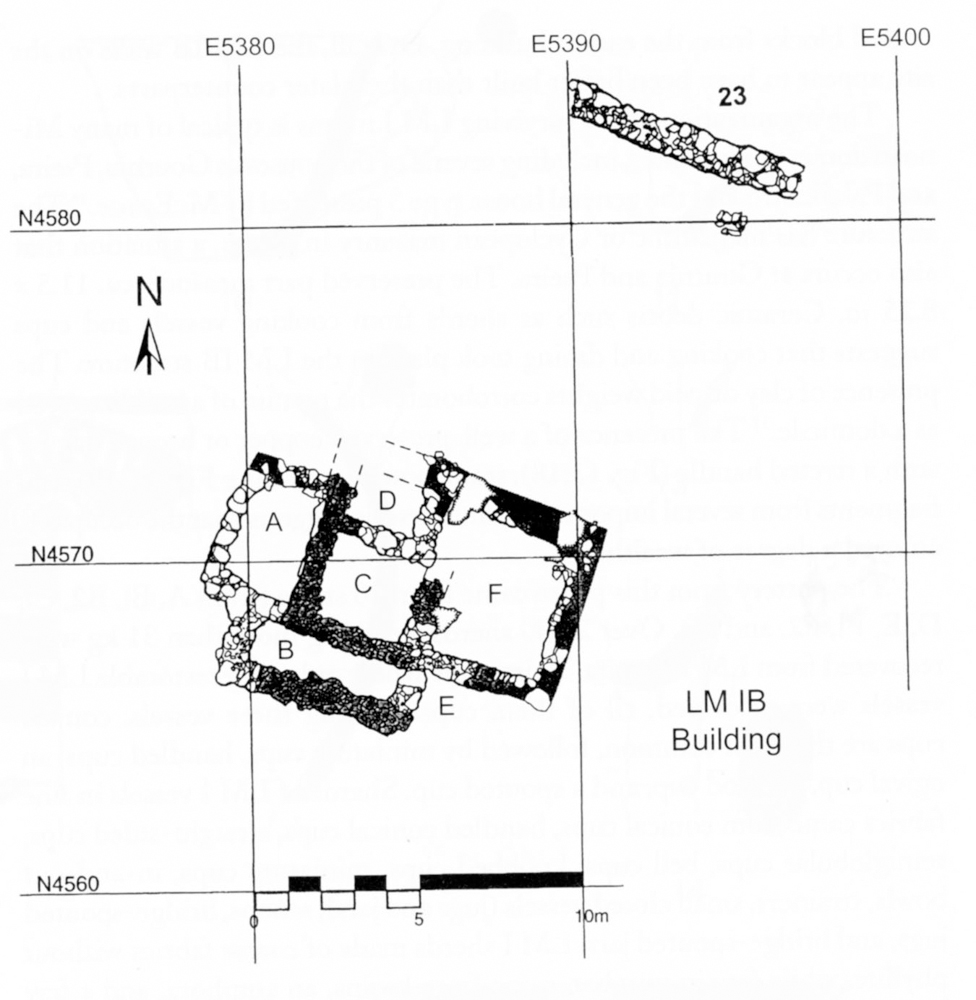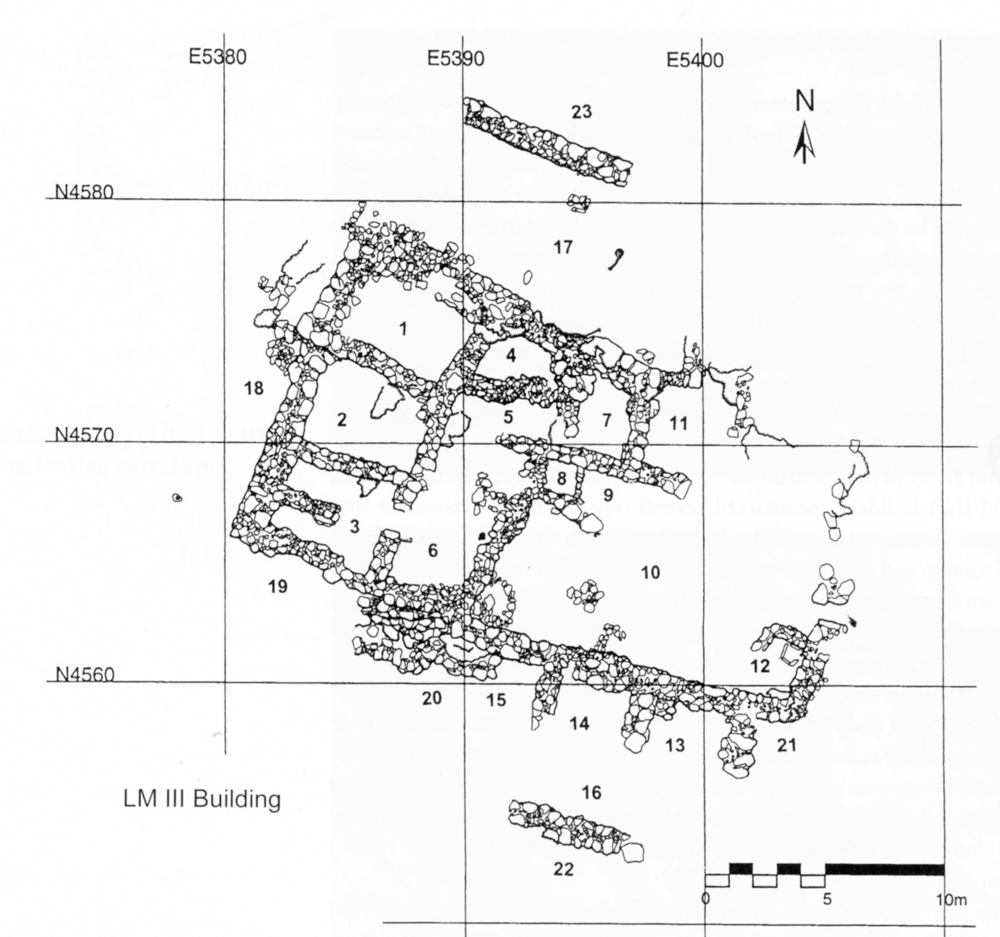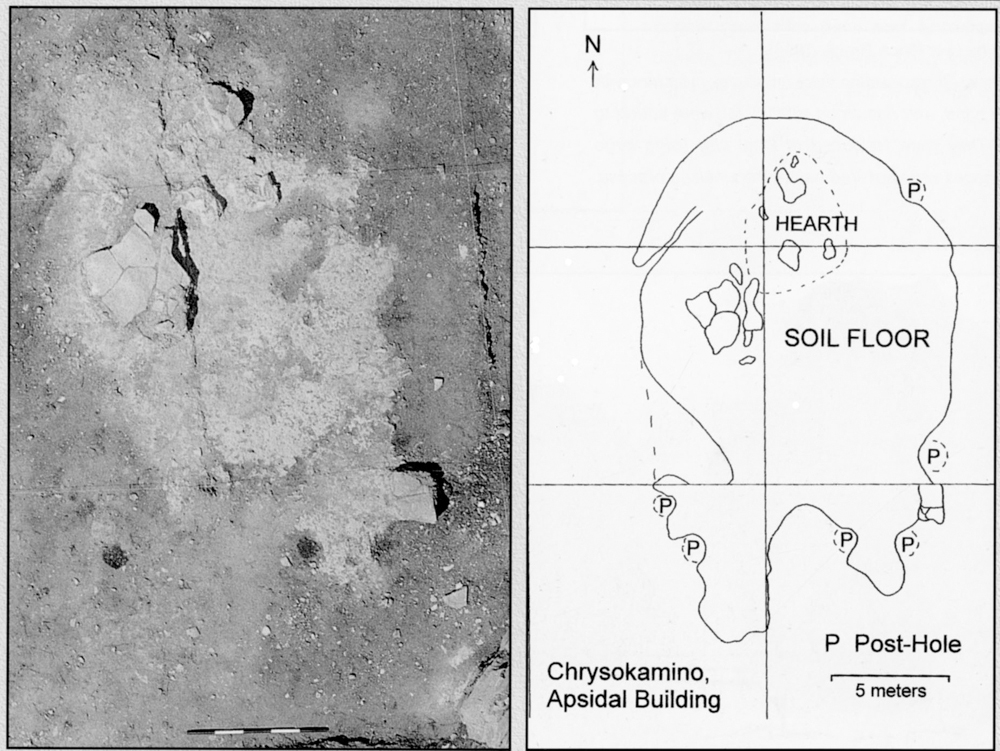Chrysokamino was first visited by Harriet Boyd in 1900, and excavations, under the direction of Philip P. Betancourt, with James D. Muhly and Cheryl R. Floyd, were conducted in 1996 and 1997 at two locations—a metallurgy workshop and a nearby habitation site.

The habitation site is located on a low hill ca. 2.5 km northwest of the village of Kavousi.


The preserved architecture dates to the Late Minoan (LM) IB and LM IIIA:2–IIIB Early periods; fragmentary ceramic material dating from the Final Neolithic (FN) to LM IA, for which there is no associated architecture, was recovered from below the floors and in the vicinity of the buildings. Only five rooms (Rooms A–D, F) and an exterior space (E) were preserved from the LM IB phase of the building, located below the southwestern quadrant of the later complex.

The LM III structure consisted of a large rectangular building (ca. 26 x 20 m), which may have had as many as 15 rooms and spaces, including a large open court (Space 10) with a detached kitchen (Room 12) and pantry (Room 14). A massive, Cyclopean wall forms the western façade of that building, and the complex appears to have functioned as an isolated farmstead. Finds of note from the habitation site include stone bowls, a bronze dagger, cooking vessels, stone tools, and loom weights.

The metallurgy workshop is located on a small headland (38 m above sea level) approximately 550 m north of the habitation site. Although FN–Early Minoan (EM) II pottery was recovered, the main period of activity at this site was in EM III. The smelting of secondary copper ores (for which the raw material was imported from elsewhere) was the primary activity at the site and presumably took place outdoors. Excavation revealed an apsidal structure (hut), constructed with wooded posts and with a large hearth, which may have been used as a small kitchen associated with the workshop. Finds of note include pottery, animal bones, shells, stone tools, tens of thousands of furnace fragments, and slag.

The habitation site of Chrysokamino can be reached by car (ca. 15 minutes) or on foot (ca. 30–45 minutes) by a dirt road beginning at the western end of the village of Kavousi; note that a small rental car may have difficulty reaching the site. The initial turn-off from the highway is marked, though the way to the site is only partially signed; two fence gates must also be opened (and closed) on the road. The site is fenced but unguarded and open; there are also informational signs. The metallurgy workshop site can be reached on foot by a road descending from the habitation site toward the sea, though there are no visible architectural remains.
Selected References
Betancourt, P.P. 2006. The Chrysokamino Metallurgy Workshop and Its Territory (Hesperia Suppl. 36), Princeton.
Betancourt, P.P., J.D. Muhly, W.R. Farrand, C. Stearns, L. Onyshkevych, W.B. Hafford, and D. Evely. 1999. “Research and Excavation at Chrysokamino, Crete 1995–1998,” Hesperia 68, pp. 343–370. DOI: 10.2307/148492.
Floyd, C.R., and P.P. Betancourt. 2010. “The Excavation of Chrysokamino-Chomatas. A Preliminary Report,” Hesperia 79, pp. 465–498.
Muhly, J.D., and P.P. Betancourt. 2000. “The Metallurgical Workshop” in Crete 2000: One Hundred Years of American Archaeological Work on Crete, J.D. Muhly, ed., Athens, pp. 70–73.
